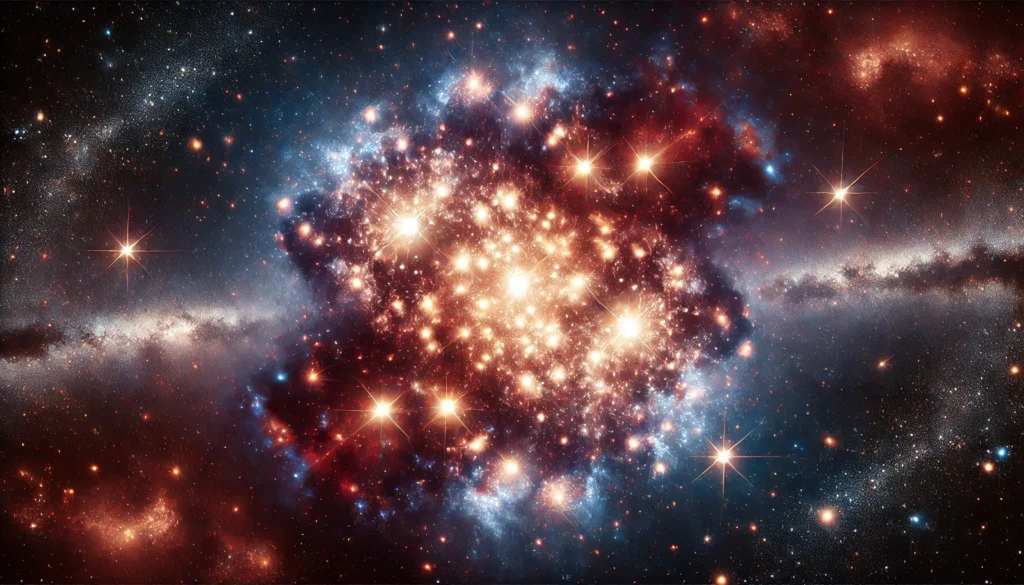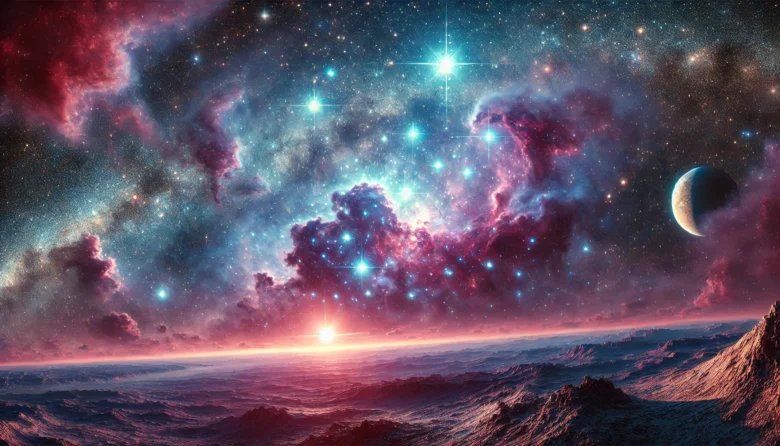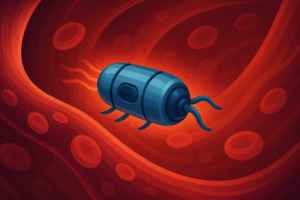Imagine looking up at the night sky and seeing not just a few stars but an entire cluster of them, shining brightly like a cosmic neighbourhood. These stellar gatherings, known as star clusters, are some of the most fascinating structures in our universe. But have you ever wondered how these clusters come to be or how they evolve over time? In this blog, we’ll dive into the formation and evolution of star clusters, exploring the journey of these celestial communities from their birth to their ultimate fate.
The Birth of Star Clusters
Star clusters are born within vast clouds of gas and dust known as molecular clouds. These clouds, often located in the spiral arms of galaxies like our Milky Way, are the nurseries where stars are born. The process begins when a portion of the molecular cloud collapses under its own gravity, leading to the formation of a dense core. As the core contracts, it heats up, eventually reaching temperatures high enough to ignite nuclear fusion—the process that powers stars.
Once a star is born, it doesn’t arrive alone. The same molecular cloud that formed one star often gives birth to many others. These newborn stars are gravitationally bound to each other, forming what we call a star cluster. There are two main types of star clusters: open clusters and globular clusters.
Open Clusters: These are relatively young clusters, often containing a few hundred to a few thousand stars. They are loosely bound by gravity and tend to disperse over time. A well-known example of an open cluster is the Pleiades, also known as the Seven Sisters, visible in the night sky.
Globular Clusters: In contrast, globular clusters are much older and contain hundreds of thousands, sometimes millions, of stars. These stars are densely packed into a spherical shape and are held together by strong gravitational forces. The Milky Way alone has about 150 globular clusters, with M13, the Great Hercules Cluster, being one of the most famous.

The Evolution of Star Clusters
Just like stars, star clusters go through a life cycle, though on a much grander scale. The evolution of a star cluster is shaped by several factors, such as the cluster’s initial mass, the arrangement of its stars, and the impact of external forces like gravitational interactions with nearby celestial bodies.
Early Life: The First Few Million Years
In the early stages of a star cluster’s life, the stars are still relatively young and closely packed. During this time, the cluster is vulnerable to external forces, such as the gravitational pull from nearby stars or even the galactic centre. These forces can cause some stars to be ejected from the cluster, leading to a gradual loss of members.
Middle Age: The Battle Against Disruption
As the star cluster ages, it continues to interact with its environment. For open clusters, this often means a slow but steady dispersion as stars drift away, either due to interactions within the cluster or external gravitational forces. Globular clusters, being more tightly bound, are more resilient but are not immune to these forces.
One interesting aspect of star cluster evolution is mass segregation. This is a process where the more massive stars tend to sink towards the centre of the cluster while lighter stars migrate to the outskirts. This creates a more concentrated core and a less dense outer region, which can affect the cluster’s stability over time.
The Later Years: Dissolution or Survival
For many open clusters, the end comes in the form of dissolution. Over time, the cluster loses enough stars that it can no longer hold itself together, eventually dispersing completely. The stars that were once part of a tightly-knit group spread out across the galaxy, becoming part of the galactic field.
Globular clusters, however, are built to last. They can survive for billions of years, even longer than some of the stars within them. Over time, they can become what are known as “fossil records” of the early universe, holding clues about the conditions that existed when they were formed.
Star Clusters as Cosmic Laboratories
Star clusters are not just fascinating objects in their own right; they are also invaluable to astronomers. Because the stars in a cluster are formed from the same material at roughly the same time, they provide a controlled environment for studying stellar evolution. By observing star clusters at different stages of their life cycle, scientists can learn a great deal about how stars of various masses and compositions evolve.
For example, the Hertzsprung-Russell diagram (HR diagram), a key tool in astronomy, is often populated with stars from a single cluster. By plotting these stars, astronomers can see how different types of stars change over time, from the main sequence to red giants and eventually to white dwarfs or supernovae.
Case Study: The Pleiades
The Pleiades, also known as the Seven Sisters, is one of the most famous open clusters and provides a perfect example of a young star cluster. Located about 444 light-years away from Earth, the Pleiades contains over 1,000 stars, though only a few are visible to the naked eye. The cluster is estimated to be about 100 million years old, which is relatively young in astronomical terms.
The Pleiades is also a treasure trove of information for astronomers. By studying the stars in this cluster, scientists have gained insights into stellar formation, the influence of interstellar material, and the dynamics of young star clusters. The blue colour of the stars in the Pleiades is due to their high temperature, a characteristic of young, massive stars.
Conclusion
Star clusters are among the most captivating structures in the universe, offering a glimpse into the life cycle of stars and the dynamics of our galaxy. From their birth in molecular clouds to their evolution and eventual fate, star clusters provide a unique window into the cosmos. Whether it’s the dispersed beauty of open clusters like the Pleiades or the ancient majesty of globular clusters like M13, these stellar assemblies remind us of the incredible processes that shape our universe.
So, the next time you look up at the night sky, take a moment to find a star cluster and appreciate the complex, beautiful journey that brought it into existence.
Author’s Note
As an enthusiast of the cosmos, I find star clusters to be one of the most intriguing subjects in astronomy. Writing about the formation and evolution of these stellar communities has deepened my appreciation for the vast and intricate universe we inhabit. I hope this blog has sparked your curiosity and inspired you to explore the night sky with renewed wonder.
G.C., Ecosociosphere contributor.
References and Further Reading
- NASA’s Overview of Star Clusters
- Hubble Snaps Beautiful Open Star Cluster in All Its Glory – Health Highroad. https://www.healththoroughfare.com/science/hubble-snaps-beautiful-open-star-cluster-in-all-its-glory/57134
- Taurus Constellation | Star Map & Facts | Go Astronomy. https://go-astronomy.com/constellations.php?Name=Taurus




